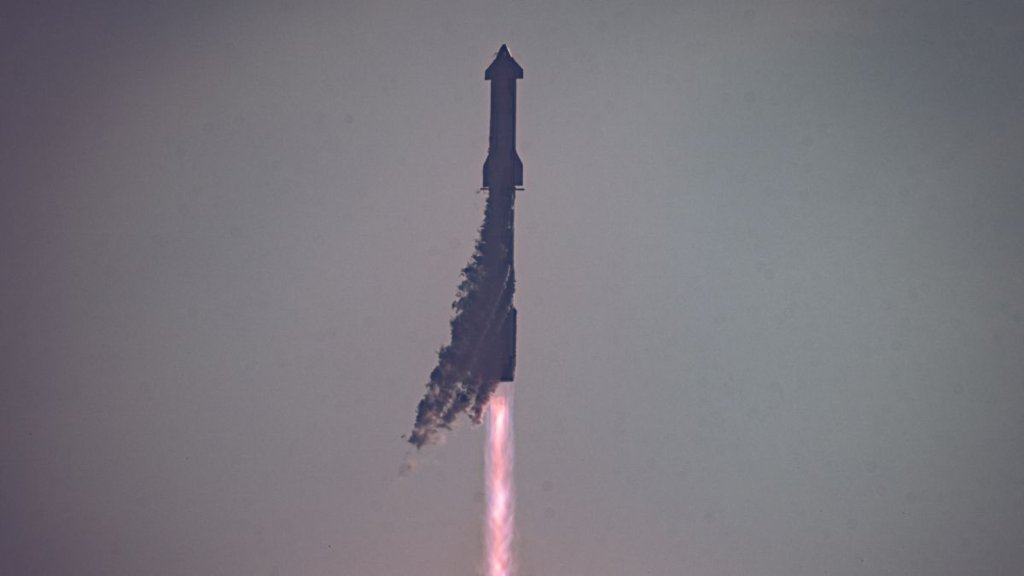
SpaceX joining FAA to fight environmental groups’ Starship lawsuit: report (Image Credit: Space.com)
SpaceX is joining the U.S. Federal Aviation Administration (FAA) to fight a lawsuit brought by environmental groups, according to media reports.
That suit, which was filed on May 1, claims that the FAA didn’t properly assess the damage that SpaceX‘s giant Starship rocket could cause to the environmentally sensitive lands surrounding its South Texas launch site.
The FAA approved 20 Starship launches annually for the next five years from Starbase, SpaceX’s facility near Boca Chica Beach on Texas’ Gulf Coast. The first of those flights lifted off on April 20, aiming to send Starship’s upper stage most of the way around our planet, with a return to Earth in the Pacific Ocean near Hawaii.
That didn’t happen. The 394-foot-tall (120 meters) Starship — the most powerful rocket ever built — notched a number of important milestones on the debut launch, eventually reaching a maximum altitude of 24 miles (39 kilometers). But it suffered several problems that impelled SpaceX to send a self-destruct command, and the rocket exploded high over the Gulf of Mexico about four minutes after liftoff.
Related: Relive SpaceX’s explosive 1st Starship test in incredible launch photos

You can have a Starship of your own with this desktop rocket model. Standing at 12.5 inches (32 cm), this is a 1:375 ratio. See our roundup of awesome Starship gear.
The 33 Raptor engines on Starship’s first-stage booster, known as Super Heavy, kicked up a huge cloud of dust and other debris during the launch. Some of that material rained down on the surrounding area, noted the lawsuit, which was filed by the Center for Biological Diversity, the American Bird Conservancy, the Surfrider Foundation, Save RGV and the Carrizo/Comecrudo Nation of Texas.
And that wasn’t the only impact to the Boca Chica area, which is important to the Carrizo/Comecrudo Nation and provides “important habitat for imperiled wildlife, including piping plovers, northern aplomado falcons, Gulf Coast jaguarundi, ocelots and critically endangered sea turtles,” the Center for Biological Diversity wrote in a statement on May 1.
“Rocket launches and explosions cause significant harm through increased vehicle traffic and the intense heat, noise, and light pollution from construction and launch activities,” the Arizona-based nonprofit wrote. “Rocket explosions spread debris across surrounding habitat and have caused brush fires.”
The FAA required SpaceX to perform more than 75 “mitigating” actions in order to launch Starship from Starbase but did not file a full environmental impact statement (EIS). The lawsuit, which you can read here, calls on the FAA to perform that more complete review.
Video: Every SpaceX Starship explosion and what we learned from them
But requiring such a step would likely be harmful to SpaceX, according to the company, which filed a motion on Friday (May 19) requesting to join the FAA as a defendant in the lawsuit.
“If the Court were to rule in Plaintiffs’ favor, the FAA’s decision could be set aside, and further licensing of the Starship/Super Heavy Program could be significantly delayed, causing severe injury to SpaceX’s business,” SpaceX wrote in the filing, CNBC reported on Monday (May 22).
SpaceX’s filing also highlighted the potential damage to the “national interest” should the plaintiffs win, according to CNBC. For example, Starship is a key part of the United States’ path back to the moon: NASA selected the huge vehicle as the first crewed lunar lander for its Artemis moon program.
If all goes according to plan, Starship will put astronauts down near the moon’s south pole in 2025 or thereabouts, on the Artemis 3 mission.
SpaceX has already invested more than $3 billion in the Starship program and Starbase facility since 2014, the company’s chief financial officer, Bret Johnsen, wrote in a declaration submitted along with the SpaceX motion, according to CNBC.
Johnsen also noted that Starship is vital to the company’s plans for its Starlink satellite-internet constellation, which already serves about 1.5 million people around the world. Starship will be needed to launch the larger, more powerful Starlink “V2” spacecraft, as company founder and CEO Elon Musk has said.
You can read more about SpaceX’s filing in the CNBC story here.








